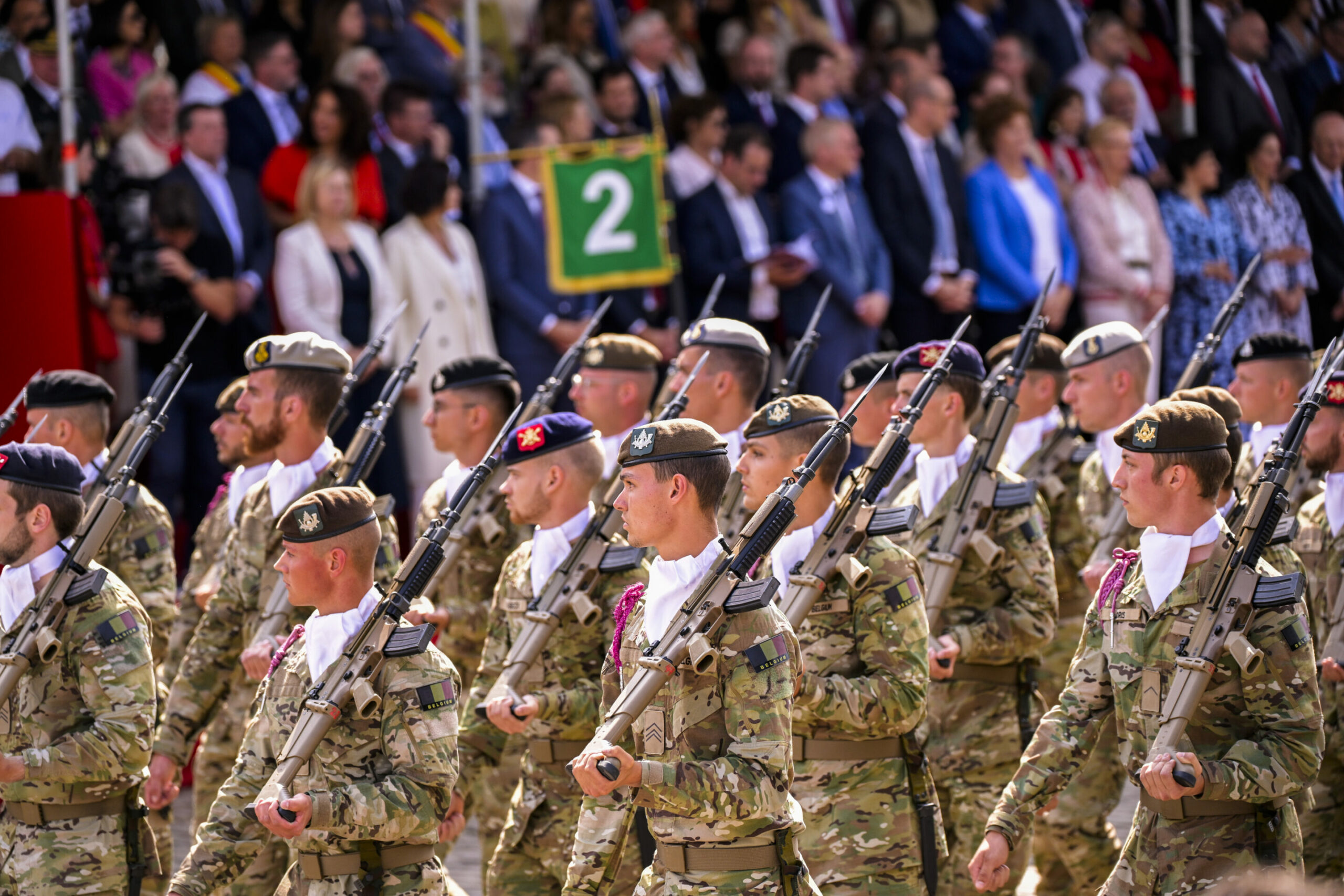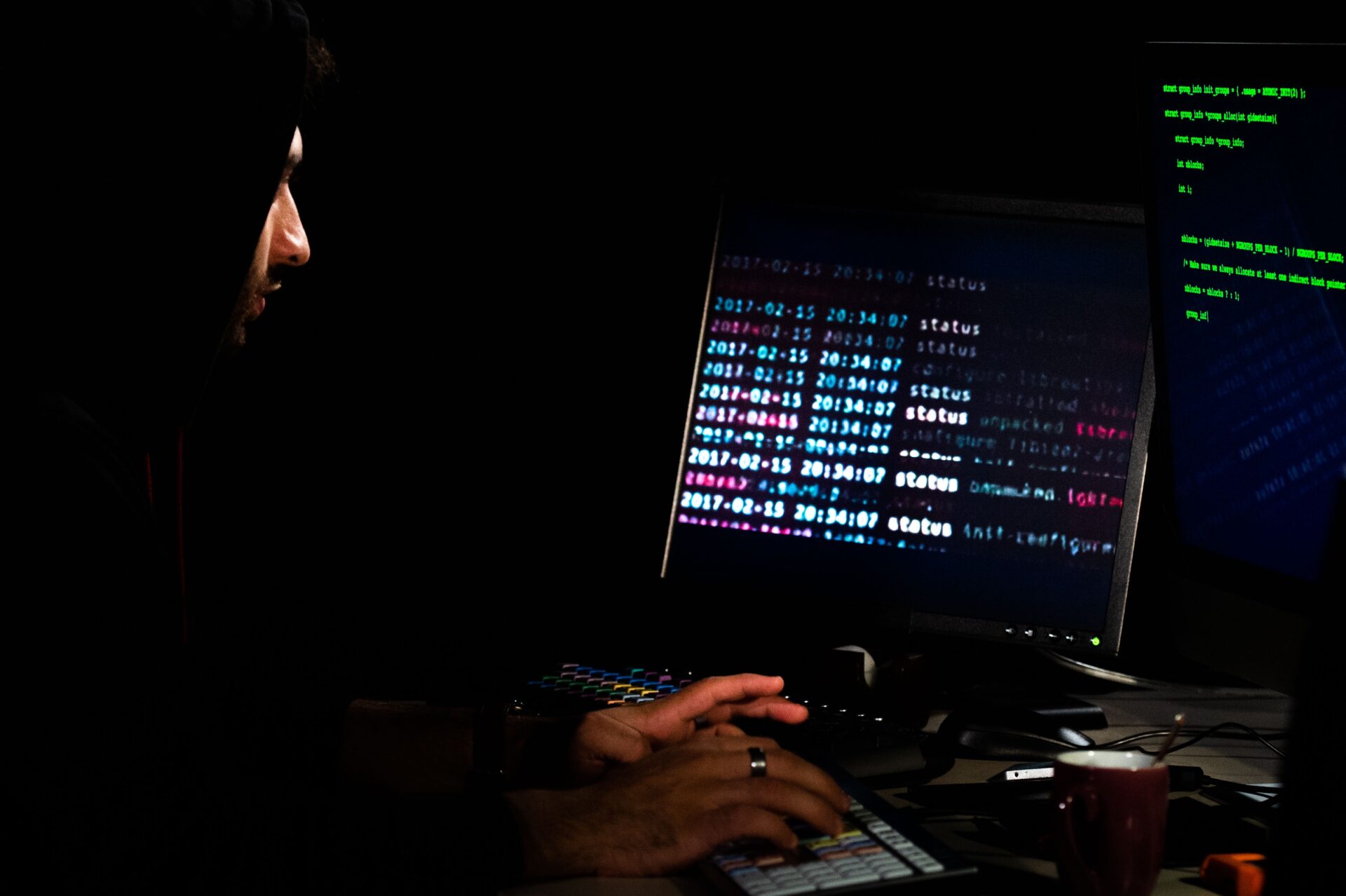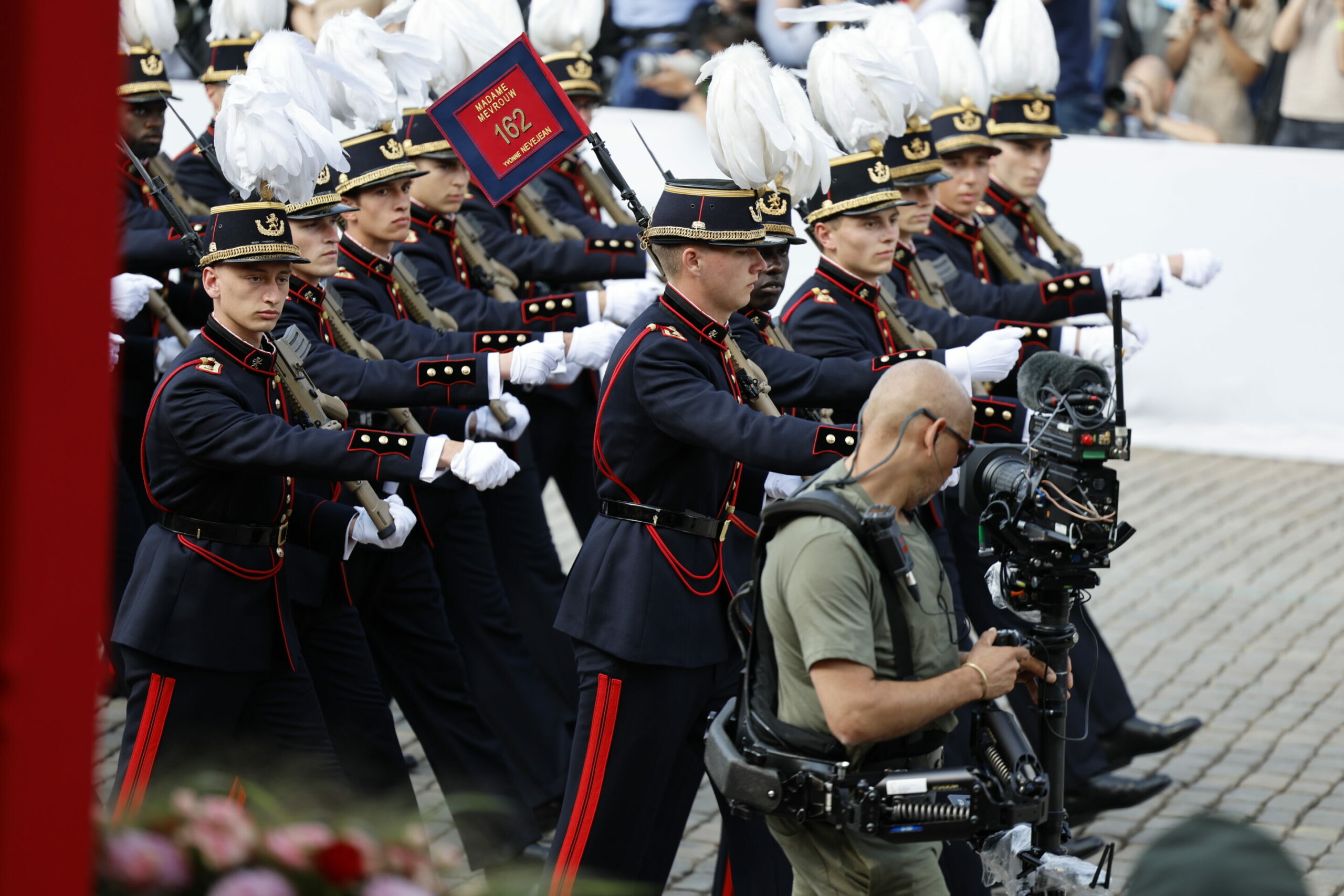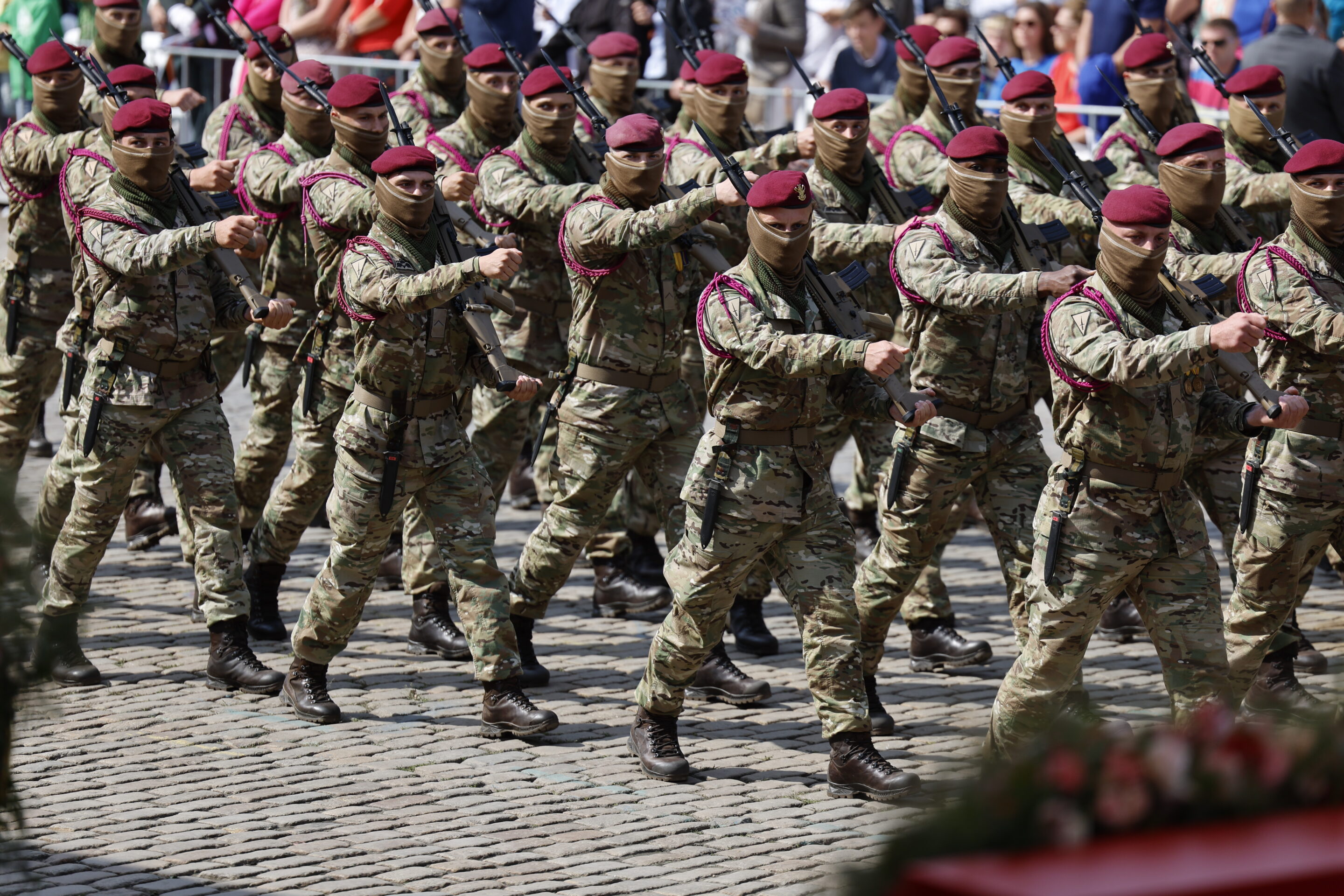On National Day, attention turns to the Belgian Armed Forces – a cornerstone of the nation's security and international engagements. Despite its relatively modest size, the Belgian military is a highly professional force, continuously evolving to meet new challenges and leverage advanced technologies.
The Belgian Armed Forces, known as La Défense or Defensie, comprise four main components: Land, Air, Naval, and Medical. These different branches of the army cooperate together to provide assistance to citizens both at home and abroad. As part of its commitment to NATO, Belgium has a record number of around 1,000 troops on deployment overseas.
"In 2024, the total personnel count is 28,485 people, including 26,105 military personnel and 2,380 civilians. Among military personnel, 11% are women, and among civilians, 46% are women," a spokesperson from La Défense told The Brussels Times. "All positions are open to both men and women without distinction."
The Armed Forces have seen a gradual decrease from 31,027 in 2014 to 23,987 in 2023. However, recruitment drives in recent years aim to reverse this trend. This year, La Défense aims to fill 4,000 vacancies, continuing its objective to fill 10,000 positions during the current legislature.
Equipment
The Belgian military is investing significantly in new equipment across all its components. Notably, the Air Component is acquiring F-35 fighter jets and MQ-9B drones, which will enhance its surveillance and combat capabilities. Additionally, A400M transport aircraft, operated jointly with Luxembourg, have recently been integrated into the army.
Belgium's F-35 procurement programme has faced criticism in recent years, with the project expected to provide less of an economic boost to the country than originally promised by former Economy Minister Kris Peeters. In August 2023, Belgium was forced to refuse delivery of the new jets due to technical issues, with the new generation of fighters now set to be delivered sometime this year. Belgians pilots have already started receiving training on the new fight jet platform in Arizona (United States).

Credit: Belga / Laurie Dieffembacq
The Land Component is undergoing modernisation as part of the CaMo (Capacité Motorisée) project, which aims to help boost interoperability with the French Army. New vehicles such as the Jaguar, Griffon, and Caesar are part of this initiative, representing a significant upgrade in the army's operational capabilities. Belgian defence company John Cockerill, alongside Swedish and other international partners, will provide 60 Jaguars and 382 Griffon infantry vehicles from France for use by the Belgian army, generating €1 billion and employing 2,000 professionals by 2026.
The Naval Component is also expanding its fleet. New mine countermeasure vessels are expected to be deployed by 2025, and plans for acquiring additional frigates are also underway, in collaboration with the Netherlands. A third patrol vessel will also be added to the fleet: the Oostende, a new mine hunter which is expected to go into service by 2025.
Cybersecurity and future innovations
Recognising the increasing threat of cyber warfare, Belgium established a Cyber Command in late 2022. This unit is the first step towards forming a dedicated Cyber Component, providing a stronger defence against cyber threats and aligning with global trends in modern warfare.
Some €400 million will be needed to create the new robust Cyber Component following a robust cyberattack against the Ministry of Defence's infrastructure in 2023. The attack cost Belgium €2.25 million and knocked the ministry's systems out for weeks, forcing the military to conduct secure communications through unsecured methods, such as via WhatsApp.

Credit: Eric Vidal / EP
The new component aims to "protect our military but also critical non-military systems" and protect Belgian citizens and sensitive technologies, outgoing Defence Minister Ludivine Dedonder said in 2022.
International collaboration and operations
Belgium plays an active role in international military operations, reflecting its strategic commitments within NATO and the EU.
Over 300 Belgian troops are currently deployed in Romania alone as part of a NATO Multinational Battlegroup, and 150 troops recently returned from Lithuania. The frigate Louise-Marie has been involved in missions in the Red Sea and the Strait of Hormuz, contributing to international maritime security.
Domestically, the Armed Forces are integral to national security and emergency response. They provide support during national crises such as floods and the Covid-19 pandemic and are involved in Search and Rescue operations and Quick Reaction Alert missions to protect the Benelux airspace.

Credit: Belga / Yorick Jansens
Besides participating actively in the two world wars, the modern Belgian army has taken part in land, air and sea engagements as part of coalitions in Korea, the DRC, Afghanistan, Chad, Iraq, Syria, Niger, and in peacekeeping missions in Rwanda, Bosnia, Mali, and Lebanon. Since 2004, Belgian fighter jets have participated in NATO Baltic Air Policing as a deterrent to Russian incursions.
"We collaborate with many countries. Our partnership with Benin, for example, is celebrating its 25th anniversary this year," La Défense said. During this year's National Day celebrations in Brussels, a Belgian-Beninese detachment will also troop in front of the Royal Palace alongside other army detachments.
Historical context and traditions
The Belgian Armed Forces date back to the country's independence in 1830. From a small rag-tag part-time militia at the time of its foundation, it has now grown to a fighting force.
The establishment of compulsory military service in 1913 marked a major shift in building a robust national defence system. Although compulsory conscription was abolished in the 1990s, discussions about its reintroduction continue. At least for now, the reintroduction of mandatory conscription is "not on the agenda" for the outgoing Belgian Federal Government.
The Royal Military Academy, established in 1834, continues to produce highly trained officers, maintaining a tradition of excellence in military education and leadership. Many members of the Royal Family choose to attend, pursuing military careers.

Credit: Belga / Jan De Meuleneir
Belgian soldiers stand out from their European counterparts for their unique camouflage uniforms of light greens and browns. Since 2022, these uniforms have slowly been phased out in favour of US-style multicam. The new uniforms also sport more comfortable versions for female members of the Armed Forces. The standard weapon of the Belgian army is the modern domestically produced FN SCAR-L battle rifle.
At military parades, Belgian grenadiers and other soldiers can be seen wearing a variety of unique ceremonial uniforms, often featuring hats adorned with white plumes, red striped trousers, and red or gold epaulettes.
'Strategic vision for the future'
The future of the Belgian Armed Forces is guided by the STAR plan (Security & Service, Technology, Ambition, Resilience), outlining a strategic vision through to 2030.
This plan emphasises modernisation, increased readiness, and expanded operational capabilities, presenting a "comprehensive strategic vision for the future". Belgium is gradually increasing its defence budget, aiming to reach 1.54% of GDP by 2030, a step towards NATO's 2% target. STAR includes a commitment of approximately €10 billion to enhance Belgium's defence infrastructure.
Related News
- Nearly half of Flemish people in favour of reintroducing obligatory military service
- Belgian armed forces need more reservists says new General
- King and Queen attend annual Belgian military parade in London (photos)
Amid global geo-political tensions, the Belgian Armed Forces are undergoing a rapid period of growth. As Belgium celebrates its National Day, the Armed Forces will once again demonstrate their capabilities with an impressive show of military might. Over the centre of Brussels, several military aircraft will conduct a low fly-by and thousands of troops and vehicles will parade through the centre.
In future years, and under Belgium's current commitments to NATO, this display should only grow in grandeur. Experts warn that there is "no time to waste" in the development of Belgium's capacities, faced with growing internal and external pressures.

